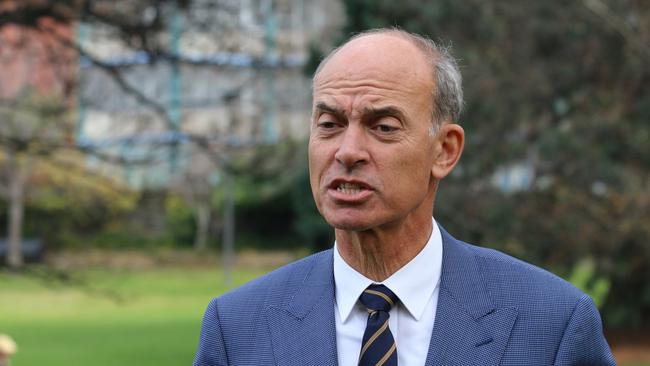Project Marinus: reports confirms economic viability and lower power prices, says state government
New reports have revealed the second Bass Strait power connector means cheaper power across the country. LATEST + UPDATED TIMELINE >>
Tasmania
Don't miss out on the headlines from Tasmania. Followed categories will be added to My News.
- Dozens of Tasmanian building service providers are under investigation by state regulator CBOS
- Tasmania borders: All the latest restrictions for Qld, NSW, Victoria, WA, NT, SA, ACT
POWER prices would be cheaper across the country with a second Bass Strait interconnector, two new reports have found.
Energy Minister Guy Barnett welcomed the independent reports which have found Project Marinus would be economically viable and would place downward pressure on wholesale electricity prices.

Released on Monday, TasNetworks’ Project Assessment Conclusions and Wholesale Pricing reports include independent analysis that demonstrates the national benefit of the $3.5 billion project.
“These reports provide further confirmation of the nationwide benefits delivered by Project Marinus, further highlighting the need for change to the current interconnector pricing rules to ensure Tasmanians pay only their fair share,” Mr Barnett said.
“Project Marinus and the clean energy it unlocks will be a significant contributor to Australia’s emissions reduction ambitions, leading to savings of up to 70 million tonnes of CO2 equivalent. Project Marinus will deliver downward pressure on electricity prices in Tasmania and across the national electricity market.”
At this point in time, the first stage of the project is due for earliest commissioning in 2027 and the second stage in 2029.

TasNetworks Project Marinus general manager Bess Clark said the independent modelling suggested under the current pricing framework, Tasmania and Victoria would pay 100 per cent of the costs for Project Marinus, but would only receive 34 per cent of the benefits.
“Customers in all NEM regions will be better off with Project Marinus, if interconnector project costs are allocated in line with the benefits customers receive,” she said.
“A beneficiary pays model is a fairer outcome to recover the Project Marinus costs over its 40-plus year service life.
“With Project Marinus, businesses and investors on mainland Australia will have the assurance of a stable power supply when solar and wind generation is not available and batteries have run out.”
Shadow Minister for Energy and Emissions Reduction Dean Winter said there had been an “incredible number” of reports on Project Marinus over the past five years.
“We still don’t know the critical question - who will pay for this project,” he said.
“No one knows, the minister can’t answer, the federal government doesn’t seem interested, but if we are going to have Tasmania being the battery of the nation like the rhetoric says, we actually need to have someone to pay for it.”
Last week, the Tasmanian Economic Regulator approved a 7.11 per cent decrease in Aurora Energy’s residential electricity price - a saving of up to $145 for the average household - to apply from July 1.
Tasmanian small business customers will receive a decrease of 11 per cent on the regulated electricity prices – representing about $183 per year in savings.



